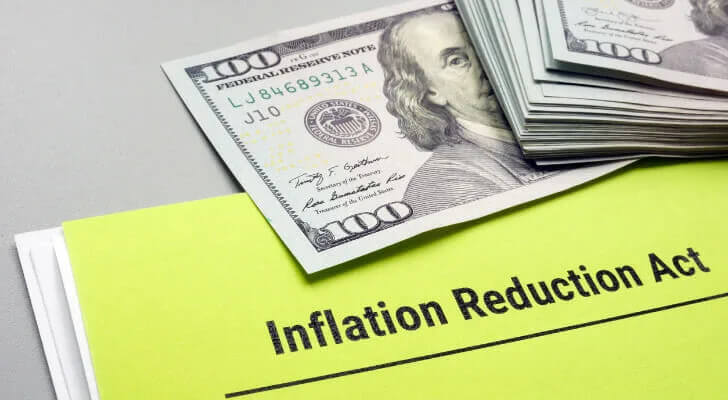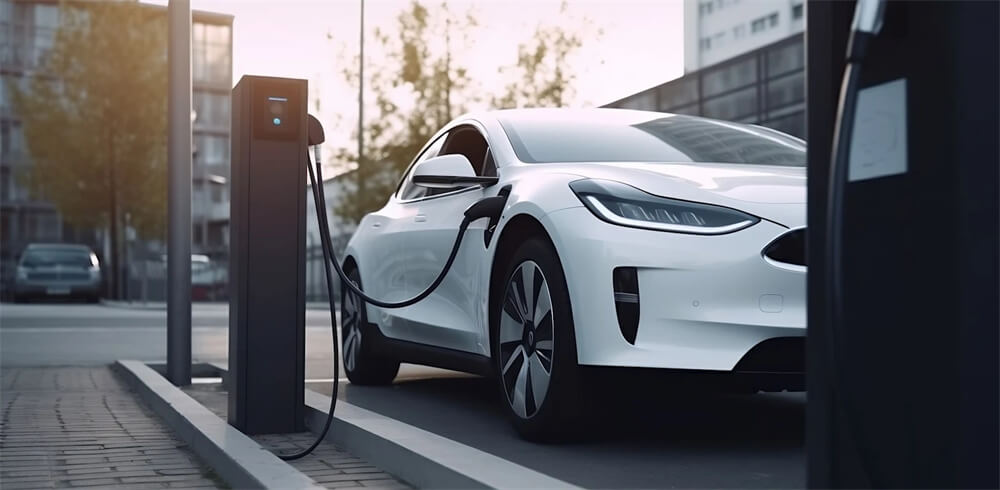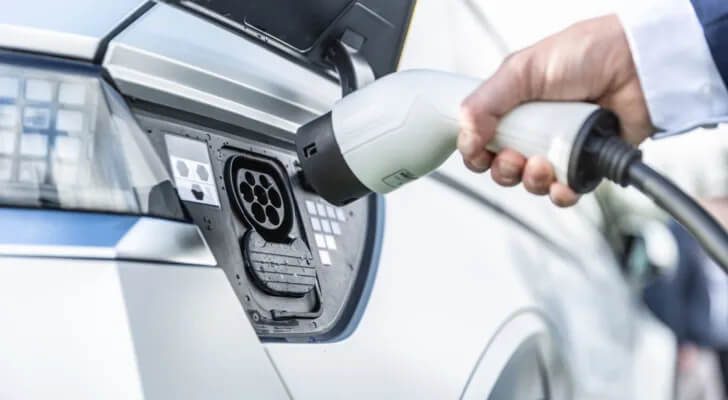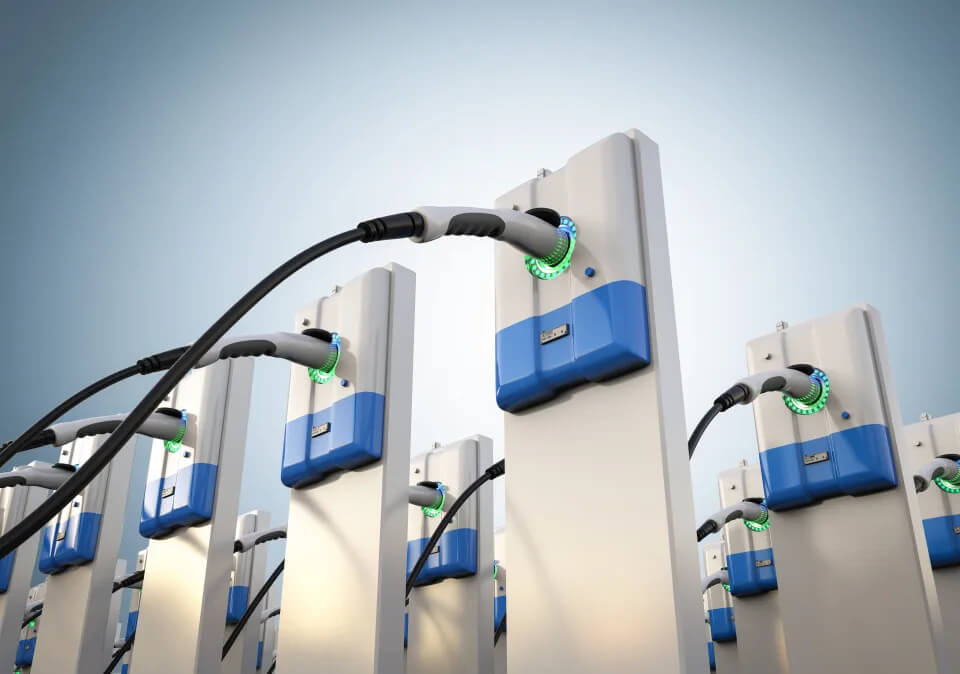Legislation that could be considered a major achievement for the Biden administration was passed during summer of 2022.
The Inflation Reduction Act (IRA) seeks to do far more than its name implies, given the gravity of inflation's current impact in the United States. Over the following decade, the law's unique combination of climate, healthcare, and tax policies is expected to reduce expenses and the deficit. Its climate efforts are especially noteworthy, and they will certainly hasten the day when electric vehicles become commonplace in the United States.
There will be more electric vehicles on the road and more charging stations thanks to the IRA. The implications of the Inflation Reduction Act for electric vehicles and charging infrastructure in the United States are discussed below.

On August 16, 2022, the IRA was signed into law by President Biden. By reducing energy and healthcare prices for Americans and the government deficit over the next decade, the $739 billion legislation package has the potential to mitigate inflationary pressures. The Congressional Budget Office estimates that by 2031 the IRA will have cut the deficit by $238 billion.
The legislation's stated goals include increasing access to Medicare services, decreasing annual energy expenses by $500 to $1,000 for the typical home, and saving the average ACA insurance marketplace enrollee $800 annually. It also increases taxes on select firms and gives Medicare the authority to negotiate lower pricing for prescription drugs.
The Inflation Reduction Act would use a variety of mechanisms to increase the availability of electric vehicle (EV) smart charging infrastructure and promote the widespread usage of EVs. The list of financed initiatives and organizations includes, but is not limited to, the following:
The United States Postal Service will get $3 billion to electrify its fleet. This sum can be used to purchase electric vehicles and electric vehicle charging stations.
The Advanced Technology Vehicle Manufacturing program, which provides low-interest loans to the car industry at the Treasury rate, will get $3 billion. Lending is provided to businesses that produce components necessary for the assembly of zero-emission automobiles, such as charging stations and the production of crucial materials.
Port authorities will get $2.25 billion to fund the purchase of zero-emission equipment including electric freight cars and container handlers, with the goal of reducing air pollution in port areas.
U.S. automakers making hybrids, electrics, and hydrogen fuel cell vehicles will receive an extra $2 billion through the Domestic Manufacturing Conversion Grant program.
A total of $1 billion will be distributed to local governments, Indian tribes, and non-profit school transportation associations for the purpose of purchasing electric vehicles to replace larger vehicles such as tow trucks, trash compactors, and transit buses. The funds can also be put toward other electrification-related endeavors, such as the installation of charging stations.
Sixty million dollars will be allocated to the Diesel Emission Reduction Act program, which has been providing grants for emission-reducing diesel engine retrofits, replacements, and repowers since 2007.
The Inflation Reduction Act electric vehicle tax credit will receive the bulk of the $391 billion, rather than government agencies. You won't receive a cheque in the mail a few months after purchasing an electric vehicle (EV) or EV charger because tax credits aren't rebates.

Simply defined, a tax credit reduces taxable income by a fixed cash amount, but a deduction reduces taxable income by a variable percentage. If you bought a new electric vehicle and qualified for a $7,500 tax credit, your tax liability would drop from $10,000 to $2,500.
After making a purchase, you may be eligible to receive a cash or check rebate.
Several tax credits, some new and some existing, will be funded by the Inflation Reduction Act. It's a large and perhaps confusing list, so let's clarify the many tax breaks that are available.
However, the IRA's climate programs are its crowning achievement.
The money is being put into several different areas:
The IRA allocates $60 billion to clean industrial industries.
Extended and increased electric vehicle tax credits: Originally set to conclude on December 31, 2021, the Clean Vehicle Credit of up to $7,500 on eligible clean vehicles has been extended all the way through 2032. Additionally, the sales cap for manufacturers is lifted, allowing customers of Tesla and GM, among others, to once again take advantage of the credit.
When buying a used electric vehicle (EV) that is at least two years old and is not being purchased for resale, consumers are eligible for tax credits of up to $4,000, or 30% of the EV's purchase price.
Credits at the point of sale: These tax credits are now available at the time of purchase rather than at tax time.
The measure not only reinstates expired tax credits for installing EV chargers in homes and businesses, but also extends and expands tax benefits for purchasing electric vehicles. Once again, this credit can be used to offset up to 30% of the acquisition price of EV charging infrastructure. However, beginning in 2023, the ceiling is raised from $30,000 to $100,000 per item for companies located in specific defined locations.

The cumulative effect of these expenditures on the environment and the availability of EVs over the next decade will be substantial. We'll delve deeper into the specific constraints placed on these programs in order to increase electric vehicle (EV) and EV charging access in low-income and rural regions.
The Inflation Reduction Act will have far-reaching effects on the United States' electric vehicle charging network. Its provisions will lead to an increase in chargers around the country as a result of increased EV charger credits and a rise in EV ownership. In the United States, the new law will impact EV charging in three distinct ways.
The IRA's stated goal of widespread EV adoption is obvious. The measure will make it easier for everyone in the United States to purchase an electric vehicle by expanding the tax credit, reopening it to include previously capped manufacturers, and expanding it to cover secondhand clean vehicles. The fact that these credits can be claimed immediately instead of waiting until tax time increases their accessibility.
These funds are intended towards the middle class in the United States. Taxpayers income more than $150,000 ($225,000 for heads of household, or $300,000 for married taxpayers filing jointly) are ineligible for the new-vehicle credit, while the credit itself is limited to vehicles with MSRPs of $55,000 or less ($80,000 for vans and pickup trucks).
To get more affordable electric vehicles (EVs) on the road and increase the long-term need for charging infrastructure, the IRA is simultaneously expanding and targeting the credits.
Additional pricing infrastructure is another issue that the IRA directly addresses. Indicative of the significant investment in charging infrastructure, the 30% credit for installing EV chargers and related equipment, such as solar panels to power charging, has been reinstated. The possibility of receiving up to $100,000 per piece in charging equipment credits is very significant for corporations.
These credits, however, have some new restrictions that you should be aware of. Credits are only available for installations in rural regions or communities with an average income below a specific threshold, as this is one of the IRA's primary goals: increasing charging access to low-income and rural communities. While this is great news for charging accessibility for everybody, it may slow down the expansion of the charging infrastructure across the country.
The rebates will likely lead to a significantly greater EV charging infrastructure. Site hosts and charging station developers who are interested in this technology will need to account for these constraints in their manufacturing processes.
In addition to lowering prices, the Inflation Reduction Act would bring more electric vehicle manufacture to the United States and its allies abroad.

It's vital to note that the tax incentives for buying EVs are limited to those that were built in North America. As of right now, just approximately 30 vehicles qualify, but the program is meant to incentivize new production goals for U.S. automakers.
Manufacturers who meet material sourcing goals will receive bonus funding thanks to the new rule. For instance, in countries with which the United States has a free trade agreement, there is a minimum need for harvesting or processing important minerals. In a similar vein, companies can have access to greater funding if they recycle a sufficient amount of materials in North America or if they construct batteries using a minimum number of North American-made or assembled components.
The growth in the U.S. electric vehicle sector will have a positive effect on the charging market.
It's hard to overestimate the significance of this new law. Although the full benefits of the IRA on electric vehicle (EV) and EV charging manufacturing may not be seen for several years, the IRA will significantly hasten the EV movement in the United States over the next decade.
Electric vehicles and the use of domestically generated electricity as a clean transportation fuel have scored a major victory with the passage of this bill. The introduction of additional EV incentives by the IRA can hasten the transition away from combustion vehicles and the more destructive mobile source emissions, which are the major contributor to global warming.
That's great news for electric vehicle (EV) and EV charging station producers in the long run as well.

扫码关注
We use cookies to understand how our audience uses our site.
Renon Power websites use cookies to deliver and improve the website experience. See our cookie policy for further details on how we use cookies. Privacy Policy